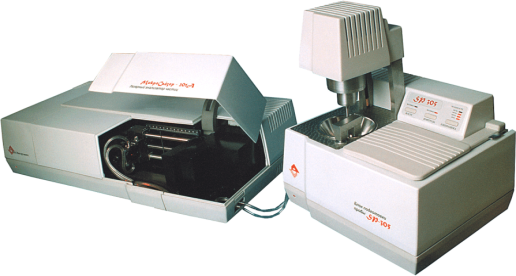Screen assay
The analysis is performed as follows:
Disintegration with the use of an ultrasonic unit, elutriation of fractions less than 10 µm. Sieving of dried samples is carried out on nineteen test sieves using the AS 200 sieving machine manufactured by RETSCH (Germany). The fractions are weighed on the LP 620 S electronic balance (SARTORIUS Company, Germany) equipped with an interface board, which provides data exchange with a personal computer. Totally, 21 fractions are identified, each of which can be presented for further studies.
The data processing programme allows us to present to the customer a list of results for each sample containing the following information: table of weights by fractions, specific values, grain size distribution chart, cumulative curve, tables of classification and cumulative coefficients in three scales: metric, gamma and phi. Cumulative coefficients are calculated following the moments method and the Folk-Ward method.
At the request of the customer, particle size analysis can be performed according to Industry and State Standards.
The Microsizer 201A laser particle analyzer makes it possible to determine the particle size distribution of natural and industrial materials consisting of finely dispersed particles — bottom sediment, clay, hydrate, bauxite, alumina, cement, etc.— in the particle size range of 0.2 - 300 μm. Taking into account the physical and chemical properties of the studied substances, experienced operators prepare samples and form a suspension of particles. The carrier fluid is distilled water. The results are presented as a histogram (the measurement range is divided into 40 intervals) and tables of the dependence of the particles’ fraction on their size.
